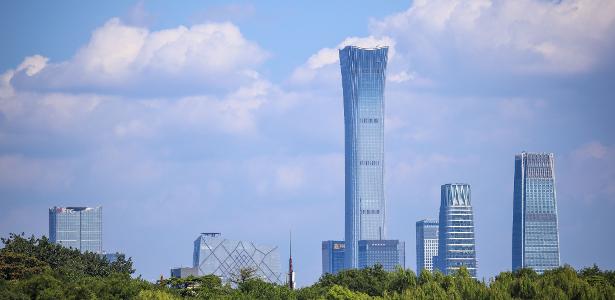Over the next few weeks, astronomy enthusiasts will have the opportunity to observe one of the brightest comets known to scientists: 12b/ponce brooks It is becoming increasingly visible in the night sky in Brazil and throughout the Southern Hemisphere.
At the moment, Devil's cometas it is widely known, this celestial body is approaching our planet (without any risk of collision), and therefore can be observed with the help of instruments.
According to the National Observatory, since April 7, observers in the northeastern region of Brazil have already been able to record the passage of the comet, but on Sunday (21) it will become visible throughout the country, when it will reach its peak approaching the sun.
12P/Pons-Brooks, discovered by French astronomer Jean-Louis Pons in 1812, gained its “satanic” nickname due to an explosion that occurred in July 2023, which distorted its coma, that is, the cloud of dust and gas surrounding its core. In the form of horns.
Still according to ON, still It is not possible to know for sure whether it is a comet It will be visible to the naked eye. Furthermore, the comet's proximity to the Sun in the sky can make observations difficult, especially in urban areas with light pollution, such as the city of São Paulo.
To locate 12P/Pons-Brooks in the sky, cell phone stargazing apps such as Star Walk 2 or Sky Tonight can be useful, as they allow the identification of many astronomical objects, as well as comets.
Simply search for Devil's Comet in these apps' search tool and point your cell phone toward the sky near the best time for observing.
The brightest comets of the year ☄️
Comets are large bodies made of dust and ice orbiting the sun this year. Among the most prominent stars that have been observed are:
- C/2021 S3 (Panstars). Visibility period: January to June. Maximum brightness: March. Visibility: Binoculars, in dark skies, during the early hours of the morning.
- C/2023 A3 (Tsouchenshan-Atlas). Visibility period: September to November. Maximum brightness: Oct. Visibility: late morning (early October) and early evening (end of October) with binoculars.
- 12P/Pons-Brooks (or Devil's Comet). Visibility period: February to June. Maximum brightness: April. Visibility: Binocularly, early evening.
- 13 F/Olbers. Visibility period: June to August. Maximum brightness: July. Visibility: Binocularly, early evening.
- 62B/Zouchenshan 1. Visibility period: January to March. Maximum brightness: Jan. Visibility: Binoculars during the early morning hours.
- 144 F/Kushida. Visibility period: January to February. Maximum brightness: Jan. Visibility: Through small telescopes, in a dark sky, during the early evening hours.
Does pollution really make the sky more beautiful?

“Incurable thinker. Food aficionado. Subtly charming alcohol scholar. Pop culture advocate.”






:strip_icc()/i.s3.glbimg.com/v1/AUTH_59edd422c0c84a879bd37670ae4f538a/internal_photos/bs/2024/4/Z/Nezw56RBC8kR9YwWVjPA/pons-brooks.jpg)
More Stories
NASA supports a project to build autonomous railways on the moon
The Apple Pencil Pro arrives with more features; Magic Keyboard is getting a new version
Scammers are using ‘dangerous’ WhatsApp button to clean bank accounts